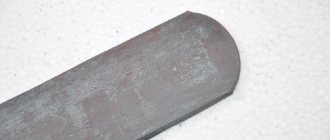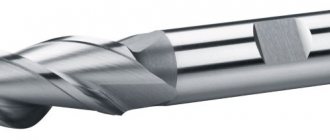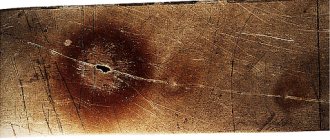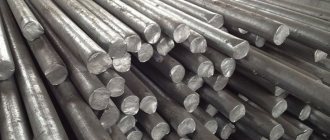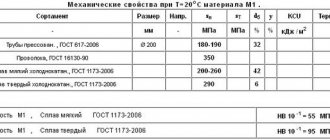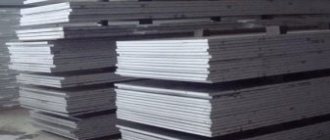Steel 03Kh12N5M6K13L (VNL-8) Steel 05Kh18AN5FL Steel 05Kh18AN6M2FL Steel 06Kh12N3DL Steel 06Kh17N10G2S2L (VNL-12) Steel 07Kh17N16TL Steel 07Kh18N10G2S2M2L Steel 07Kh18 N9L (5Х18Н9Л) Steel 07Х20Н25М3Д2ТЛ Steel 07Х21Н9С2М (VNL-4) Steel 07Х24Н8М2Д3Л (ВКЛ-1) Steel 07ХН25МДТЛ Steel 08G2DNFL Steel 08Х12Н4ГСМЛ Steel 08Х13ГДЛ Steel 08Х13Л (ЭИ496Л) Steel 08Х14Н5М2ДЛ (VNL-3) Steel 08Х14Н7МЛ (VNL-1; 5Х14Н7МЛ) Steel 08Х14НДЛ Steel 08Х15Н4ДМЛ Steel 08Х17Н34 V5T3YU2L (5Х17Н34В5Т3У2Л) Steel 08Х17Н34В5Т3У2РЛ Steel 09Х16Н4БЛ (10Х16Н4БЛ) Steel 09Х17Н3СЛ (10Х17Н3СЛ) Steel 10Х12НДЛ (0Х12НДЛ) Steel 10Kh14N5M2L (VNL-2) Steel 10Kh14NDL (5Kh14NDL) Steel 10Kh17N10G4MBL (EI402ML; 10Kh17N10G4MBLS) Steel 10Kh17N13G4D2TL (0Kh17N13G4D2TL) Steel 10Kh18N11BL (5Kh18N11BL) Steel 10Kh18N12M3L Steel 10Kh18N3G3D2L (0Kh18N3G3D2L) Steel 10Kh18N9BL (Kh18N9BL) Steel 10Kh18N9L Steel 10Kh21N6M2L Steel 10Kh28N6M3AL Steel 110G10L Steel steel 12Kh13N3M2L (VNL-9) Steel 12Kh16N8M2BL (VNL-11) Steel 12Kh18N12BL (10Kh18N12BL) Steel 12Kh18N12M3TL Steel 12Kh18N6FAL Steel 12Kh18N7M2FAL Steel 12x18N9TL (10x18N9TL) steel 12x19N7G2G2Cal steel 12x21N5G2CAL 12X21N5G2H2X2X21N5G2CM2L 12X21N5G2TL Steel 12x25N5TMFL (10x25N5TMFL) steel Stel 130g14xfal Stales L 3NFTL Steel 13x11N5M5L (NEL-5) Steel 14x18N4G4G4G (10x18N4G4L) Steel 14x2GMRL Steel 15DNML Steel 15x11MFBL STEL 15X13L (10x13L) Steel 15Kh14NL Steel 15Kh18N10G2S2M2L Steel 15Kh18N10G2S2M2TL Steel 15Kh18N10L Steel 15Kh18N12S4L Steel 15Kh18N22V6M2L Steel 15Kh18N22V6M2RL Steel 15Kh23N18L Steel 15Kh25 TL Steel 16GDNML Steel 16Х18Н12С4TYUL (EI654LK) Steel 18Х12НМВФЛ Steel 18Х25Н19СЛ (15Х25Н19СЛ) Steel 20ГSNDML Steel 20Н3DML Steel 20ФТЛ Steel 20Х12ВНМФЛ Steel 20Х13Л Steel 20Х20Н14С2Л Steel 20Х21Н46В8Л Steel 20Х21Н46В8RL Steel 20Х25Н19С2Л ( 15Х25Н19С2Л) Steel 20Х5МЛ Steel 20Х5ТЛ Steel 20Х8ВЛ Steel 20ХГСНМЛ Steel 20ХГСФЛ Steel 25НЛ Steel 25Х2НМЛ Steel 27ХГСНМДТЛ (27ХГСНМДТЛА) Steel 27ХГСНМЛ Steel 27ХН2МФ L Steel 30Kh16N22V6BL (TsZh-13L) Steel 30Kh24N10ATS2L Steel 30Kh28N6M2L Steel 30KhG2STL Steel 31Kh19N9MVBTL (EI572L; 30Х19НМВБТЛ) Steel 35Х18Н24С2Л (30Х18Н24С2Л) Steel 35Х23Н7СЛ (25Х23Н7СЛ) Steel 35ХМФЛ Steel 40Г17ХН2 (MML-1) Steel 40Х17СЛ (GX40CrSi17) Steel 40Х24Н12С L (30Х24Н12СЛ) Steel 40Х27Н4СЛ (GX40CrNiSi27-4) Steel 40Х29СЛ (GX40CrSi29) Steel 40Х9С2Л Steel 45Г17НМФ (ММЛ- 3) Steel 45G18Kh2TYuL Steel 45Kh17G13N3YuL Steel 4Kh4N5MK (VKL-4M) Steel 50Kh24N12SAL Steel 55Kh18G14S2TL Steel 60G17KhN2F (MML-2) Steel 60Kh16G13TL Steel 70KhL Steel 85Kh4M 5F2V6L (R6M5L) Steel 90G14Yu2 Steel 90Kh28MFTAL Steel 90Kh4M4F2V6L (R6M4F2L) Steel 95Kh18M (VNL-13) Alloy ANV-300 Alloy VZhL8 Steel G13Kh2L Steel G13KhL Steel Kh23N26M3TFL Steel Kh23N28M3D3TL Steel Kh25N13ATL
Designations
| Name | Meaning |
| Designation GOST Cyrillic | 110G13L |
| Designation GOST Latin | 110G13L |
| Translit | 110G13L |
| By chemical elements | 110Mn13 |
| Name | Meaning |
| Designation GOST Cyrillic | G13L |
| Designation GOST Latin | G13L |
| Translit | G13L |
| By chemical elements | Mn13 |
Letter designations of steels and their interpretation
The chemical composition of many alloyed structural steels is determined by GOST 4543–71 “Rolled products from alloyed structural steel. Technical conditions". The same standard defines the basic letter symbols for designating alloying elements. It must be taken into account that steels are currently produced with additions of elements, the designation of which is not provided for by the standard. In this case, the elements in the steel grade are usually designated by the first letters of the name.
The symbolic letter designations of the main alloying elements are given below.
- A – nitrogen*
- B – niobium
- B – tungsten
- G – manganese
- D – copper
- E – selenium
- K – cobalt
- L – beryllium*
- M – molybdenum
- N – nickel
- P – phosphorus
- R – boron*
- C – silicon
- T – titanium
- F – vanadium
- X – chrome
- C – zirconium
- Ch – RZM
- Yu – aluminum
- Ш – magnesium*
* – if the letter is in the middle of the marking, for example 16G2AF
Description
Steel 110G13L is used : for the manufacture of castings for vortex and ball mill housings, jaws and cones of crushers, tram and railway switches and crosses, caterpillar tracks, sprockets, excavator bucket teeth and other parts subject to impact wear; parts of mill linings of mining and metallurgical equipment; point crosspieces of switches of grades 1/11 and 1/9 for rails of types P75, P65, P50 with cast cores.
Note
High-manganese wear-resistant steel of austenitic class. Steel has a high resistance to wear when simultaneously exposed to high pressures or shock loads.
Applications of Hadfield steel
Hadfield steel is used in many industries , as it has very important and useful qualities.
When making products from this material, you can be sure that it will not fail, since the strength and other positive qualities of Hadfield steel are undeniable. High wear resistance and strength directly influenced the popularity of this material. Various enterprises involved in the manufacture of different types of products used this material, since it was this steel that could provide the necessary strength to the product.
Therefore, it is not at all surprising that Hadfield steel is used in the manufacture of a huge number of different products. With its help, track tracks of tanks (as already mentioned above), cars, tractors, rail crosspieces, jaws of crushers, turnouts, which are capable of working under severe conditions of abrasion and shock loads, are made. In addition, it is Hadfield steel that is used to make window bars for prisons .
By the way, an interesting fact can be said about the last point. The fact is that the use of Hadfield steel to make window bars for prisons is jokingly called a mockery of prisoners. The fact is that a classic escape involves using a hacksaw to cut a metal grate, after which you can escape. History has recorded a huge number of such escapes according to a banal scenario using a hacksaw to cut metal. By the way, an interesting fact: according to prison guards, it is hacksaws that take first place in the top items that friends and relatives try to smuggle to prisoners.
And if in the case of using a hacksaw in relation to ordinary window bars, the prisoners still had some chances for salvation, then the use of Hadfield steel simply does not leave them. The fact is that this steel, unlike others, has a very interesting property, which is that in the process of cutting the grating rods, a strong hardening of the surface that is affected occurs. This affects the hardening of the steel , increasing its hardness to the hardness of the hacksaw itself and even higher. As a result, one should not even hope for a positive result from such a futile enterprise.
Standards
| Name | Code | Standards |
| Castings with special properties (iron and steel) | B83 | GOST 21357-87, GOST 2176-77, KSt 81-033:2009, TU 48-22-98-83, TU 14-1-563-73, TU 14-1-641-73, TU 4112-78269737-001 -2005 |
| Rails. Overlays. Linings. Crutches | B42 | GOST 7370-98, GOST 28370-89, TU 32-TsP-671-93 |
| Steel castings | B82 | GOST 977-88, OST 24.920.01-80, KSt 81-038:2009, TU 108.11.549-87, TU 14-1-4788-90 |
Chemical composition
| Standard | C | S | P | Mn | Cr | Si | Ni | Fe | Cu | Ti |
| GOST 977-88 | 0.9-1.5 | ≤0.05 | ≤0.12 | 11.5-15 | ≤1 | 0.3-1 | ≤1 | Remainder | — | — |
| GOST 2176-77 | 0.9-1.4 | ≤0.05 | ≤0.12 | 11.5-15 | ≤1 | 0.3-1 | ≤1 | Remainder | ≤0.3 | — |
| GOST 7370-98 | 1-1.3 | ≤0.02 | ≤0.09 | 11.5-16.5 | — | 0.3-0.9 | — | Remainder | — | — |
| KSt 81-038:2009 | 0.9-1.1 | ≤0.05 | ≤0.1 | 11.5-14.5 | ≤1 | 0.2-0.6 | ≤0.5 | Remainder | — | ≤0.1 |
| GOST 21357-87 | 0.9-1.2 | ≤0.02 | ≤0.02 | 11.5-14.5 | ≤0.3 | 0.4-0.9 | ≤0.3 | Remainder | ≤0.3 | — |
Fe is the basis. According to GOST 21357-87, to increase the wear resistance of castings, microalloying of steel with titanium up to 0.05%, vanadium up to 0.30%, and molybdenum up to 0.20% is allowed. According to KSt 81-038:2009, the chemical composition of steel with narrower limits on the content of components used for the manufacture of wear-resistant parts of mill linings is given. According to GOST 7370-98, in the manufacture of cores and solid crosspieces of turnouts, it is allowed, by agreement between the manufacturer and the consumer, to introduce alloying elements and modifying additives into the steel. According to GOST 2176-77, the chemical composition is given for steel grade 110G13L. Castings can be made from steel with a high carbon content, but not more than 1.50%. Deviations from the chemical composition standards are allowed: for carbon ±0.020%; for silicon ±0.10%; for manganese, copper, chromium and nickel ±0.10% each; for titanium and tungsten ±0.050% each; for vanadium, molybdenum and niobium ±0.020% each.
Steel grade 110G13L
| Brand: 110G13L Class: Ordinary steel for castings Type of delivery: castings: GOST 2176-77. Use in industry: housings of vortex and ball mills, jaws and cones of crushers, teeth and front walls of excavator buckets, railway crosses and other heavily loaded parts operating under static and high dynamic loads and from which high wear resistance is required. |
| Chemical composition in % of steel 110G13L | ||
| C | 0,9 — 1,4 | |
| Si | 0,8 — 1 | |
| Mn | 11,5 — 15 | |
| Ni | up to 1 | |
| S | up to 0.05 | |
| P | up to 0.12 | |
| Cr | up to 1 | |
| Cu | up to 0.3 | |
| Fe | ~83 | |
| Foreign analogues of steel grade 110G13L | |||
| USA | A128, J91109, J91119, J91129, J91139, J91149 | Germany | 1.3401, 1.3802, GX120Mn12, GX120Mn13, X120Mn12 |
| Japan | SCMnH1, SCMnH11, SCMnH2, SCMnH3 | France | Z120M12, Z120M12M |
| England | BW10 | Italy | GX120Mn12 |
| Spain | AM-X-120Mn12, F.240, F.8251, X120Mn12 | China | ZGMn13-1, ZGMn13-1-4, ZGMn13-2, ZGMn13-3 |
| Sweden | 2183 | Hungary | X120Mn13 |
| Poland | C120G13, L120G13 | Romania | T105Mn120, T130Mn135 |
| Czech | 17618, 422920 | Finland | G-X120Mn13 |
| Austria | BOHLERK700 | South Korea | SCMnH1 |
| Norway | 1699 | ||
| Additional information and properties |
| Weldability of the material: not applicable to welded structures. Flock sensitivity: not sensitive. Tendency to temper brittleness: not prone. Cutting ability: HB 229, К υ tv. spl=0.25 Temperature of the beginning of solidification, °C: 1350-1370 Crack resistance index, Kt.u.: 0.4 Tendency to form a shrinkage cavity, Cur.r.: 1.7. Fluidity, Kh.t: 0.8. Linear shrinkage, %: 2.6-2.7 Tendency to form shrinkage porosity, CoP: 2.5 |
| Mechanical properties of 110G13L at various test temperatures | ||||||
| Test temperature, °C | σ0.2 (MPa) | σв (MPa) | δ5 (%) | ψ % | KCU (J/cm2) | NV |
| 20 -20 -40 -60 -80 | 360-380 | 654-830 | 34-53 | 34-43 | 260-350 240-320 220-300 190-300 90-210 | 186-229 |
| Endurance limit of steel 110G13L | ||
| σ-1, MPA | n | Heat treatment |
| 176-196 | 106 | σв=640-710 MPa |
Long-term strength limit of steel 110G13L
σ2001000=882 MPa, σ5501000=107 MPa, σ3001000=686 MPa, σ4001000=441 MPa
| Corrosion resistance of steel 110G13L | |
| Wednesday | Corrosion depth, mm/year |
| KTV 3% NaCl solution | 0,043 0,081 |
A typical example of the use of 110G13 steel: the steel is used for electroslag surfacing - the production of bimetallic crusher beaters (the base is low-carbon steel). The technology of electroslag surfacing involves the use of a consumable nozzle with a feed of Sv-08 electrode wire with a diameter of 4 mm and a charge material consisting of a mixture of blast furnace and electroferromanganese in a ratio of 4:1. The charge is fed through a disc feeder driven by a wire feed mechanism. Surfacing mode: Iс = 630 A; Uc = 22 V; hs =30 mm; ve = 104 m/h; feeder capacity 50 g/min.
The depth of penetration of the base metal is 3-5 mm. A layer with a cross section of 25 X 40 mm is fused along the length of the beater 850 mm. The initial and final sections of the deposited layer are removed by gas cutting, immersing the beater in water to eliminate the possibility of overheating the layer. The cut areas are cleaned with an emery wheel.
Chemical composition of the deposited layer: 0.9-1.1% C; 13.5 - 14% Mn; 0.4-0.5% Si; 0.018-0.023% S; 0.08-0.09% R. The electroslag process provides a more favorable thermal cycle compared to the arc process, and a lesser tendency to form hot cracks. The durability of the blows increases by 8-9 times.
The technology of simultaneous horizontal electroslag surfacing of a series of mine mill beaters is of interest. After cleaning the welded surface, the beaters are placed in special conductors attached to a closed conveyor belt. Copper spacer plates 10 mm thick are installed between them. The welded surface of the beaters and copper spacers form a continuous strip onto which the charge and flux are supplied. The flux-charge-flux layer is melted with a comb of low-carbon wires fed by a surfacing apparatus. The following is the surfacing mode:
| Current strength, A | 2500—3500 |
| Voltage, V | 32—36 |
| Number of wires, pcs. | 6 |
| Wire diameter, mm | 3 |
| Speed, m/h: surfacing wire feed | 120 3.4 |
| Material consumption per blower (Stalinite alloy), kg: ferrochrome ferromanganese wire Sv-08A flux AN-348-A | 0.46 0.38 1.1 0.2 |
With horizontal electroslag surfacing, most operations are mechanized. Further improvement of surfacing technique and technology, as well as increasing the dimensional accuracy of blow blanks, can make it possible to fully automate the surfacing process. The wear resistance of welded blows is 3 times higher than that of non-surfaced ones. After the completion of the surfacing operation, the copper spacer plates are removed and the beaters are separated from one another.
An industrial installation U-305 with a power source TSHN-15 was developed and manufactured, on which cast iron and steel rolls of a strip mill “300” and two wire mills “250-1” and “250-2” are deposited. Electroslag surfacing is carried out with tubular electrodes D 300 mm, centrifugally cast from alloy cast iron. The length of the roll barrel is 450 mm, the total length is 1400 mm, the material of the roll is nodular cast iron. The working layer is bleached chromium-nickel cast iron of the Nihard type with the following composition: 2.8% C; up to 0.3% Si; 0.6% Mn; 0.8% Cr; up to 3.8% Ni; up to 0.55% P and up to 0.11% S. The hardness of the working layer of bleached cast iron is HB 560-630, the layer thickness is 25-35 mm. It is 2.5-3.5 times the thickness of the permissible wear.
For surfacing rolls, ANF-14 flux is used. The process can be started using the liquid start principle or using a special mixture containing ANF-14 flux, steel shavings and mill scale. Some parameters of the surfacing mode are given in the table below.
| Table 9.60 | ||||||||||
| N pp | Roll material | Barrel dimensions, mm | Preheating temperature, °C | Start of the process | Work mode | |||||
| Diameter | Length | UC, B | IC, A | t, min | UC, B | IC, A | t, min | |||
| 1 | Steel 45 | 350 | 450 | 200-250 | 49 | 3000 | 5 | 43-40 | 5000 | 80 |
| 2 | Cast iron | 337 | 705 | 100-150 | 46 | 3000 | 5 | 40-37 | 5000 | 140 |
| 3 | Steel 45 | 350 | 450 | 20 | 49 | 3000 | 7 | 46-43 | 6500 | 60 |
| 4 | Steel 45 | 350 | 450 | 150-200 | 46 | 3000 | 10 | 49-37 | 6000 | 67 |
| 5 | Cast iron | 337 | 705 | 200-250 | 46 | 3000 | 5 | 40-37 | 5000 | 120 |
The productivity of the installation is 120-150 kg/h. The chemical composition (%) of the deposited and electrode metal is given in the table below.
Serial numbers of the table. 9.61 correspond to the numbers in table. 9.60.
A study of the microstructure of the deposited layer (No. 3, Table 9.60) showed that it is quite complex and consists of martensite, lower bainite, pearlite, residual alloyed austenite and a cementite component.
| Table 9.61 | ||||||||||
| N pp | Metal | Ctot | Cfree | Mn | Si | S | P | Cr | Ni | Mo |
| 1 | Welded | 3.45 | 2.76 | 0.61 | 2.2 | 0.043 | 0.6 | 0.88 | 1.07 | 0.76 |
| Electrode | 3.65 | — | 0.81 | 2.43 | 0.116 | 0.4 | 0.9 | 1.24 | 0.9 | |
| 2 | Welded | 3.37 | 2.85 | 0.57 | 1.8 | 0.037 | 0.36 | 0.7 | 1 | 0.61 |
| Electrode | 3.64 | — | 0.84 | 2.43 | 0.116 | 0.4 | 0.9 | 1.24 | 0.9 | |
| 3 | Welded | 3.45 | 2.9 | 0.72 | 1.21 | 0.07 | 0.45 | 1.82 | 2.45 | 0.63 |
| 4 | Same | 3.35 | 0.4 | 0.58 | 1 | 0.045 | 0.46 | 1.54 | 2.45 | 0.71 |
| 5 | » | 3.69 | 1.6 | 0.54 | 1.68 | 0.074 | 0.54 | 0.65 | 0.87 | 0.58 |
The durability of deposited rolls is 2-3 times higher than that of cast iron two-layer rolls. High-alloy steels and copper-based alloys are used as anti-corrosion coatings applied by electroslag surfacing. The most satisfactory results were obtained with electroslag surfacing with minimal penetration of the base metal.
Mechanical characteristics
| Section, mm | sТ|s0.2, MPa | σB, MPa | d10 | y, % | kJ/m2, kJ/m2 | Brinell hardness, MPa |
| Mechanical properties of metal for the manufacture of cores and solid crosspieces of turnouts according to GOST 7370-98 for metal groups | ||||||
| ≥355 | ≥880 | ≥30 | ≥27 | ≥245 | — | |
| Castings with a cross section of 30 mm. Quenching 1050-1100 °C, water. | ||||||
| — | 360-380 | 654-830 | 34-53 | 34-43 | 260-350 | 186-229 |
| Mechanical properties of metal for the manufacture of cores and solid crosspieces of turnouts according to GOST 7370-98 for metal groups | ||||||
| ≥355 | 780-880 | 25-30 | 22-27 | 196-245 | — | |
| Castings with a cross section of 30 mm. Quenching 1050-1100 °C, water. | ||||||
| — | 360-380 | 654-830 | 34-53 | 34-43 | 240-320 | 186-229 |
| Mechanical properties of metal for the manufacture of cores and solid crosspieces of turnouts according to GOST 7370-98 for metal groups | ||||||
| ≥355 | 690-780 | 16-25 | 16-22 | 166.6-196 | — | |
| Castings with a cross section of 30 mm. Quenching 1050-1100 °C, water. | ||||||
| — | 360-380 | 654-830 | 34-53 | 34-43 | 220-300 | 186-229 |
| Castings of cores and solid crosspieces of turnouts according to GOST 7370-98 in delivery condition | ||||||
| — | ≥355 | ≥735 | ≥25 | ≥22 | ≥166.6 | — |
| Castings with a cross section of 30 mm. Quenching 1050-1100 °C, water. | ||||||
| — | 360-380 | 654-830 | 34-53 | 34-43 | 190-300 | 186-229 |
| Castings. Quenching in water from 1050-1100 °C (after heat treatment there should be a purely austenitic structure) | ||||||
| — | ≥400 | ≥800 | ≥25 | ≥35 | — | ≥190 |
| Castings with a cross section of 30 mm. Quenching 1050-1100 °C, water. | ||||||
| — | 360-380 | 654-830 | 34-53 | 34-43 | 90-210 | 186-229 |


